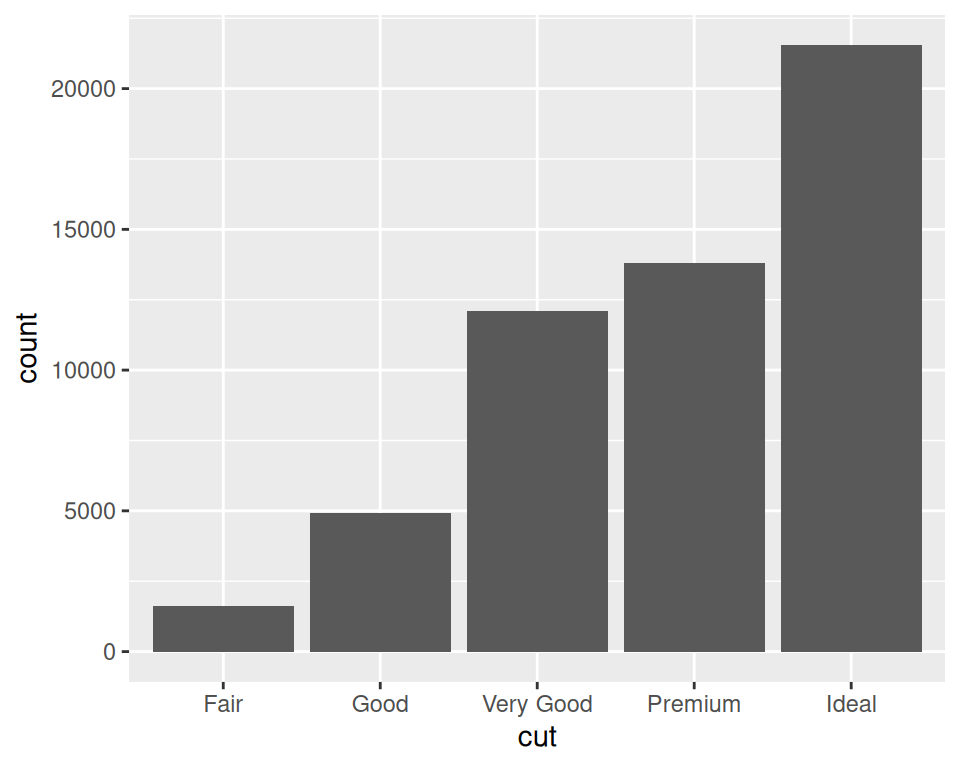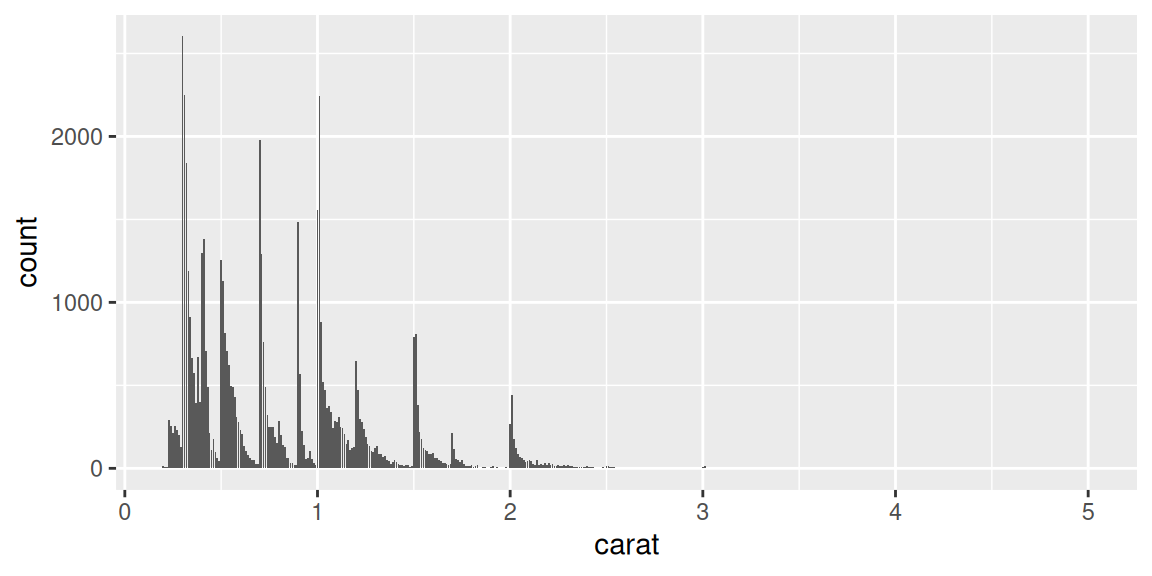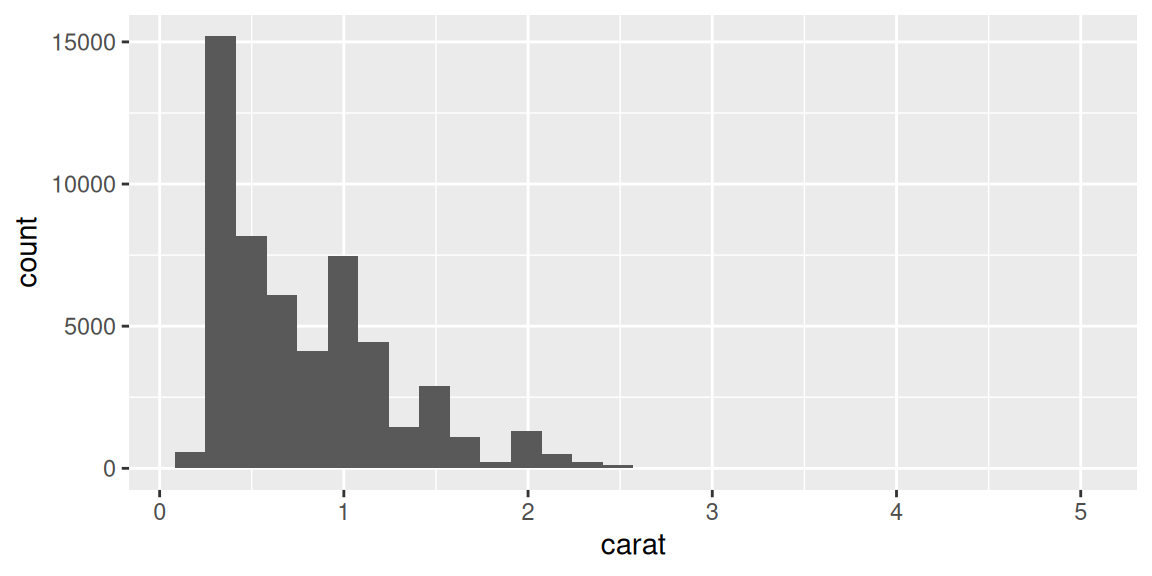3.3 Making a Bar Graph of Counts
3.3.2 Solution
Use geom_bar() without mapping anything to y (Figure 3.7):

Figure 3.7: Bar graph of counts
3.3.3 Discussion
The diamonds data set has 53,940 rows, each of which represents information about a single diamond:
diamonds
#> # A tibble: 53,940 × 10
#> carat cut color clarity depth table price x y z
#> <dbl> <ord> <ord> <ord> <dbl> <dbl> <int> <dbl> <dbl> <dbl>
#> 1 0.23 Ideal E SI2 61.5 55 326 3.95 3.98 2.43
#> 2 0.21 Premium E SI1 59.8 61 326 3.89 3.84 2.31
#> 3 0.23 Good E VS1 56.9 65 327 4.05 4.07 2.31
#> 4 0.29 Premium I VS2 62.4 58 334 4.2 4.23 2.63
#> 5 0.31 Good J SI2 63.3 58 335 4.34 4.35 2.75
#> 6 0.24 Very Good J VVS2 62.8 57 336 3.94 3.96 2.48
#> # ℹ 53,934 more rowsWith geom_bar(), the default behavior is to use stat = "bin", which counts up the number of cases for each group (each x position, in this example). In the graph we can see that there are about 23,000 cases with an ideal cut.
In this example, the variable on the x-axis is discrete. If we use a continuous variable on the x-axis, we’ll get a bar at each unique x value in the data, as shown in Figure 3.8, left:


Figure 3.8: Bar graph of counts on a continuous axis (left); A histogram (right)
The bar graph with a continuous x-axis is similar to a histogram, but not the same. A histogram is shown on the right of Figure 3.8. In this kind of bar graph, each bar represents a unique x value, whereas in a histogram, each bar represents a range of x values.
3.3.4 See Also
If, instead of having ggplot() count up the number of rows in each group, you have a column in your data frame representing the y values, use geom_col(). See Recipe 3.1.
You could also get the same graphical output by calculating the counts before sending the data to ggplot(). See Recipe 15.17 for more on summarizing data.
For more about histograms, see Recipe 6.1.